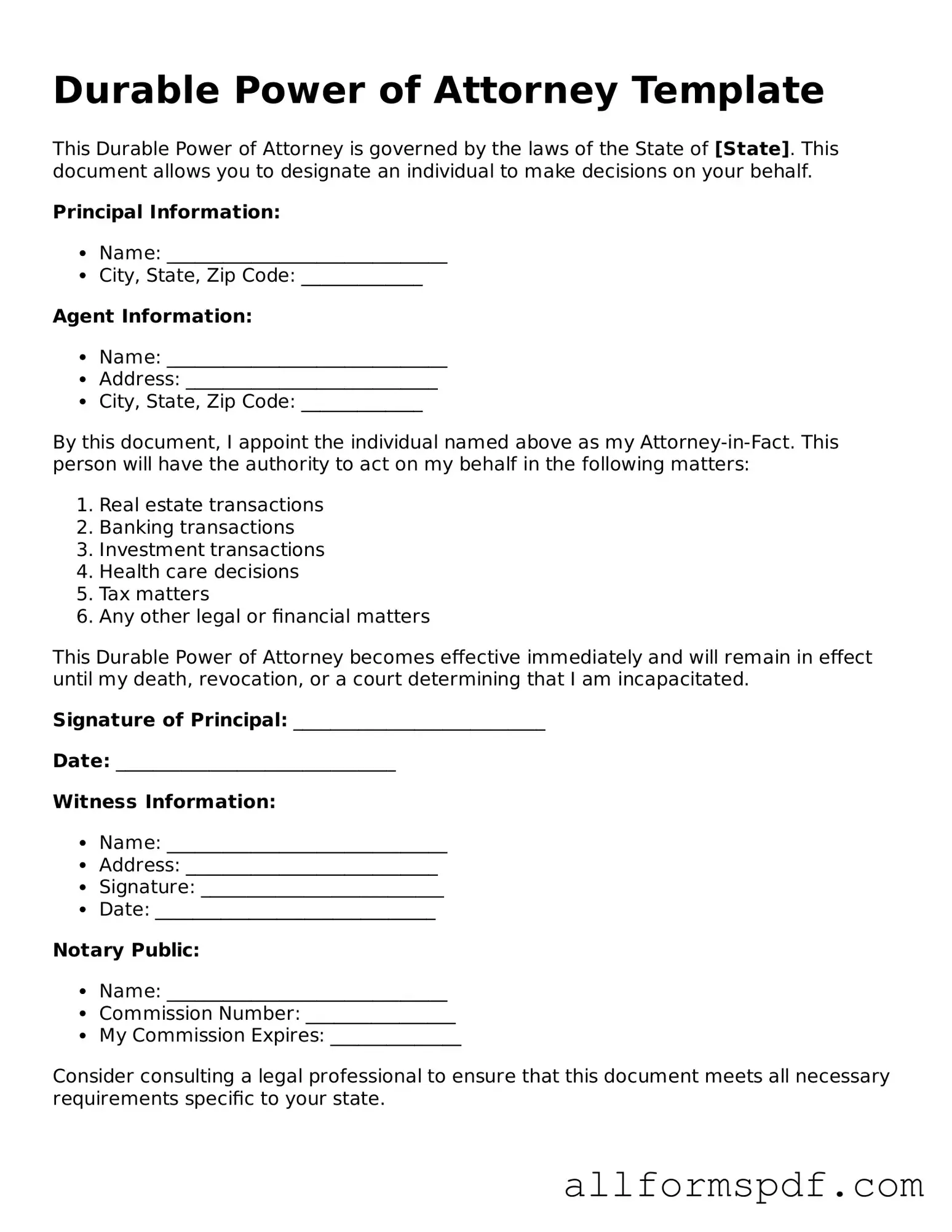Filling out a Durable Power of Attorney (DPOA) form is a crucial step in ensuring that your financial and healthcare decisions are managed according to your wishes in the event that you become incapacitated. However, many individuals make common mistakes that can lead to confusion or even invalidate the document. Understanding these pitfalls can help you avoid them.
One frequent error is failing to specify the powers granted to the agent. A DPOA should clearly outline what decisions the agent can make on your behalf. Without this clarity, the agent may not have the authority to act in certain situations, potentially leading to delays in necessary decisions.
Another mistake is neglecting to choose a reliable agent. It is essential to appoint someone you trust completely, as they will have significant control over your financial and medical matters. Choosing an agent based solely on convenience or familial ties can lead to conflicts and mismanagement.
Some individuals overlook the importance of signing the document in front of a notary or witnesses, as required by state law. Notarization adds a layer of legitimacy and can prevent challenges to the document's validity. Failing to follow these legal requirements can render the DPOA ineffective.
Moreover, people often forget to update their DPOA when life circumstances change. Major life events such as marriage, divorce, or the death of a previously appointed agent should prompt a review and potential revision of the document. Keeping the DPOA current ensures that it reflects your current wishes.
Another common oversight is not discussing the DPOA with the appointed agent. Open communication about your wishes and expectations can help the agent make informed decisions. Without this conversation, the agent may struggle to understand your preferences in critical moments.
In addition, some individuals fail to consider the potential for conflicts of interest. Appointing an agent who stands to benefit financially from your decisions can lead to ethical dilemmas and mistrust among family members. It is crucial to choose someone who will act in your best interest, free from personal gain.
Another mistake involves using outdated or incorrect forms. Laws governing DPOAs can vary significantly by state, and using a form that does not comply with local regulations can invalidate the document. Always ensure you are using the most current and appropriate form for your jurisdiction.
People also sometimes forget to include alternative agents in the event that the primary agent is unable or unwilling to serve. Designating a backup agent ensures that there is always someone available to make decisions on your behalf, thus preventing potential gaps in care or management.
Lastly, individuals may not understand the implications of granting a Durable Power of Attorney. It is essential to recognize that this document gives significant authority to the agent, and a thorough understanding of its scope and limitations is necessary. Misunderstanding these implications can lead to unintended consequences.
